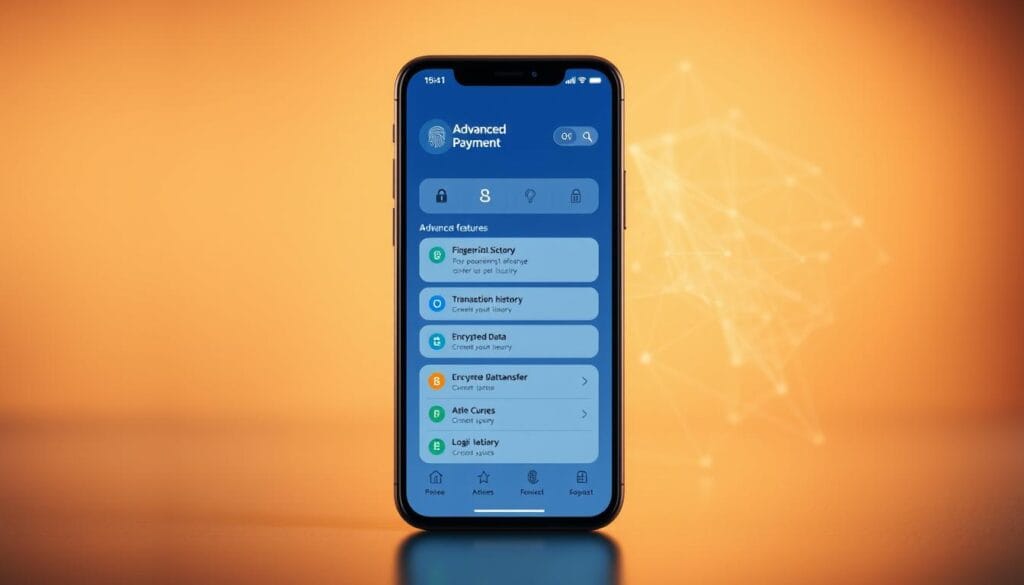The global adoption of crypto is on the rise, with a recent report indicating that over 300 million people worldwide now own some form of cryptocurrency.
This growing demand has driven innovation in digital transactions, with various wallet solutions emerging to facilitate everyday commerce.
As the crypto landscape continues to evolve, users are seeking reliable and secure apps to manage their transactions.
The need for a comprehensive guide to the best crypto payment solutions has never been more pressing.
Key Takeaways
- Leading cryptocurrency payment apps for 2025 and their features
- Key factors to consider when selecting a crypto payment app
- How these apps address common challenges in transactions
- Unique value propositions of specialized payment platforms
- Strategic recommendations for individual users and businesses
The Rise of Cryptocurrency Payment Solutions

Cryptocurrency payment solutions have emerged as a revolutionary force in the digital transaction space. As the crypto market continues to evolve, these solutions are transforming the way we conduct financial transactions.
The cryptocurrency payment landscape has undergone significant transformation since the early days of Bitcoin, evolving from niche applications to mainstream financial tools that are increasingly integrated into everyday commerce. Technological advancements in blockchain infrastructure have addressed early limitations such as transaction speed, scalability, and user experience, making crypto payments more practical for routine transactions.
Transforming Digital Transactions
Cryptocurrency payment solutions are disrupting traditional payment processing by eliminating intermediaries, reducing cross-border friction, and offering enhanced security through cryptographic verification. This transformation is creating new opportunities for businesses and consumers alike, enabling faster and more secure transactions.
The platform for cryptocurrency payments is expanding rapidly, with various features being developed to enhance user experience. These include programmable money, conditional payments, and integration with decentralized finance (DeFi) protocols, which expand the functionality beyond simple transfers.
Key Benefits of Cryptocurrency Payments
The adoption of cryptocurrency payment methods is driven by several key benefits, including reduced transaction fees compared to traditional payment processors, particularly for international transfers. Additionally, cryptocurrencies provide enhanced privacy options while maintaining necessary compliance with regulatory frameworks, offering users greater control over their financial information.
Furthermore, crypto payment solutions are creating financial inclusion opportunities for the unbanked and underbanked populations globally, providing access to digital commerce without traditional banking relationships. As the market continues to evolve, we can expect to see further innovations in transactions, money management, and related services.
What to Look for in Cryptocurrency Payment Apps

When selecting a cryptocurrency payment app, several key factors must be considered to ensure a secure and efficient transaction experience. As the adoption of digital currencies continues to expand, the importance of evaluating these factors becomes increasingly critical for both individual users and businesses.
Security Features and Protocols
The security infrastructure of a cryptocurrency payment app should be the primary consideration. This includes features such as multi-factor authentication, biometric verification, and cold storage options for funds not actively being used for transactions. Robust encryption protocols and private key management systems are also crucial in protecting users’ assets from unauthorized access and potential security breaches.
Supported Cryptocurrencies
Another critical aspect is the range of cryptocurrencies supported by the app. A diverse range of options beyond major coins like Bitcoin and Ethereum to include stablecoins and emerging digital assets can significantly enhance the app’s utility. For those interested in exploring various trading strategies, it’s beneficial to choose an app that supports a broad spectrum of cryptocurrencies. You can learn more about effective strategies in our article on effective cryptocurrency trading strategies for 2025.
Transaction Fees and Limits
Understanding the structure of transaction fees is vital. This includes network fees, conversion rates, and any hidden costs that might impact the overall value of crypto payments. Additionally, being aware of transaction limits and processing times across different platforms can help users make informed decisions. The technical and regulatory factors influencing these parameters can significantly affect various use cases, making it essential to evaluate them carefully.
By carefully assessing these factors, users can select a cryptocurrency payment app that meets their needs, ensuring a secure, efficient, and cost-effective transaction experience.
Understanding Cryptocurrency Payment Apps in 2025

The cryptocurrency payment ecosystem in 2025 is characterized by specialized applications serving different purposes. As the industry continues to mature, distinct categories of applications have emerged, each catering to specific needs within the crypto economy.
Cryptocurrency payment apps have evolved to prioritize transaction efficiency and merchant integration, diverging from the traditional trading-focused functionality of cryptocurrency exchanges. According to recent developments, these payment apps are optimizing for point-of-sale functionality, recurring payments, and seamless conversion between crypto and fiat currencies.
How Crypto Payment Apps Differ from Exchanges
Crypto payment apps differ significantly from exchanges in their design and functionality. While exchanges are primarily used for trading cryptocurrencies, payment apps are designed to facilitate everyday transactions, making it easier for users to spend their crypto assets. This distinction is crucial for users who need to make payments in crypto without navigating complex exchange platforms.
As stated by industry experts, “The separation between payment apps and exchanges is becoming more pronounced, with payment apps focusing on user experience and merchant acceptance.” This shift is driven by the growing demand for efficient and secure payment solutions.
Integration with Traditional Financial Systems
The integration of cryptocurrency payment apps with traditional financial systems is a significant development in 2025. These apps are now connecting with banking networks, payment processors, and point-of-sale terminals, enabling seamless transactions between crypto and fiat currencies. Application programming interfaces (APIs) play a crucial role in this integration, allowing cryptocurrency payment apps to connect with accounting software, e-commerce platforms, and enterprise resource planning systems.
For instance, some cryptocurrency payment apps are implementing compliance mechanisms to satisfy anti-money laundering (AML) and know-your-customer (KYC) requirements, ensuring that digital asset transactions remain efficient and secure. As the industry continues to evolve, we can expect to see further innovations in this space, including enhanced payment services.
Top Cryptocurrency Payment Apps for 2025

In the evolving world of cryptocurrency, a handful of payment apps have risen to prominence, offering users a blend of security, ease of use, and innovative features. Whether you’re a beginner looking for a user-friendly interface or a seasoned investor seeking better portfolio management, these platforms offer something for everyone.
The top cryptocurrency payment apps for 2025 include Gemini, Coinbase, CoinLedger, Zengo, and Fidelity. These platforms are known for their intuitive design, regulatory compliance, and innovative features. For instance, Gemini and Coinbase are recognized for their user-friendly interfaces and regulatory compliance, while CoinLedger simplifies crypto tax reporting for users.
Our Selection Criteria
Our comprehensive evaluation of cryptocurrency payment applications for 2025 employs a multifaceted methodology that considers technical performance, security infrastructure, user experience, and market adoption metrics. We assessed each application based on transaction processing speed, fee transparency, supported cryptocurrency range, security protocols, and integration capabilities with merchant systems.
The selection process involved weighting different factors, prioritizing security and reliability while also considering innovation and unique features that enhance the payment experience. We incorporated both quantitative metrics (such as transaction costs and processing times) and qualitative assessments (such as interface design and customer support quality) to develop a balanced ranking.
For a more detailed review of cryptocurrency exchanges, you can visit Top Cryptocurrency Exchanges Reviewed for 2025. This resource provides insights into the best cryptocurrency exchanges, helping you make informed decisions about your crypto transactions.
Our analysis also addressed how each application’s approach to regulatory compliance and privacy protection was evaluated, recognizing the importance of these factors in the evolving cryptocurrency payment landscape. By considering real-world transaction scenarios across different cryptocurrencies, merchant types, and geographical regions, we ensured a comprehensive performance assessment.
Coinbase

With a strong reputation for compliance and innovation, Coinbase has become a trusted name in crypto payments. As the largest cryptocurrency exchange in the United States, it offers a streamlined experience for users looking to buy, sell, or hold digital assets.
Key Features and Payment Capabilities
Coinbase has established itself as a dominant force in the cryptocurrency payment space, leveraging its extensive experience since 2012 to develop robust payment processing capabilities. The platform’s payment infrastructure offers merchants and individual users a comprehensive suite of tools for initiating, receiving, and managing cryptocurrency transactions with an emphasis on security and regulatory compliance.
Coinbase Commerce, the company’s dedicated payment processing service, enables businesses to accept cryptocurrency payments directly into their Coinbase wallets without requiring customers to have Coinbase accounts. This feature enhances the usability and accessibility of crypto payments for both merchants and customers.
Supported Cryptocurrencies and Integration Options
Coinbase supports over 280 cryptocurrencies for trading, with a selection optimized for payment processing featuring faster confirmation times and lower transaction fees. The platform’s integration capabilities with e-commerce platforms, point-of-sale systems, and accounting software are facilitated through its well-documented API and developer tools, making it a versatile choice for various business needs.
The platform also offers a user-friendly interface that makes it accessible to beginners while providing advanced features for experienced traders.
Pros and Cons for Payment Processing
Coinbase’s security infrastructure for payment processing includes insurance policies, cold storage protocols, and fraud detection systems that protect merchants and customers. However, it also has limitations such as geographical restrictions and potential account freezes during regulatory reviews.
The analysis concludes with an assessment of Coinbase’s suitability for different payment use cases, from e-commerce integration to in-person retail transactions and recurring payment management, highlighting its position as a leading crypto payment solution.
Gemini Pay

Gemini Pay offers a seamless cryptocurrency payment experience, backed by Gemini’s institutional-grade security framework. As a highly trusted crypto platform, Gemini is built with a security-first mindset, making it a reliable choice for both individuals and institutions.
Unique Payment Features and Security
Gemini Pay has distinguished itself in the cryptocurrency payment ecosystem by emphasizing institutional-grade security and regulatory compliance. The platform’s payment infrastructure is built on Gemini’s robust security framework, which includes SOC1 Type2 and SOC2 Type2 certifications, cold storage for funds, and hardware security modules that protect transaction signing processes. This allows users to spend cryptocurrencies like Bitcoin, Ethereum, and Gemini Dollar (GUSD) directly from their Gemini account balance without requiring separate wallet transfers.
For more information on how blockchain technology is enhancing cross-border payments, visit this article on fast and cheap cross-border payments using blockchain.
Merchant Acceptance and Usability
Gemini Pay integrates with traditional payment networks, enabling users to make purchases at any merchant that accepts standard payment methods while the transaction is settled in cryptocurrency behind the scenes. The platform’s merchant acceptance network has expanded significantly through strategic partnerships with payment processors and point-of-sale system providers. Gemini Pay’s user interface design simplifies the payment process through QR code scanning, NFC capabilities, and clear transaction confirmation screens that display both cryptocurrency and fiat equivalent values.
Pros and Cons for Everyday Transactions
Gemini Pay’s approach to transaction fees and exchange rates balances competitive pricing with the costs of maintaining its high security and compliance standards. While it offers a robust payment solution, Gemini Pay has limitations, including a more restricted cryptocurrency selection compared to some competitors and potential processing delays during periods of high network congestion. The platform’s privacy features allow users to control how much transaction information is shared with merchants while maintaining necessary compliance with financial regulations.
Overall, Gemini Pay is suitable for different types of users, from privacy-conscious individuals to businesses seeking compliant cryptocurrency payment solutions. Its unique blend of security, compliance, and usability makes it an attractive option in the cryptocurrency payment landscape.
Kraken Pay

As a leading cryptocurrency exchange, Kraken has extended its services to include Kraken Pay, a comprehensive payment solution designed for secure and efficient cryptocurrency transactions. Kraken Pay builds upon Kraken’s established reputation since 2011, extending its services from trading to specialized payment processing with an emphasis on security, global accessibility, and competitive fee structures.
Kraken Pay’s payment infrastructure leverages Kraken’s presence in over 190 countries, facilitating cross-border cryptocurrency transactions with minimal friction. This addresses a key pain point in international commerce by providing a seamless payment experience for both merchants and customers.
Payment Features and Security Protocols
Kraken Pay’s security protocols are robust, featuring air-gapped cold storage for the majority of funds, mandatory two-factor authentication, global settings lock, and 24/7 surveillance of the platform’s infrastructure. These measures ensure that users’ assets are protected from potential threats.
The platform supports over 300 cryptocurrencies, providing flexibility for merchants and customers with diverse cryptocurrency holdings. Additionally, Kraken Pay offers customizable payment buttons, invoicing systems, and API access that enables integration with e-commerce platforms and point-of-sale systems.
Pros and Cons for Crypto Payments
One of the significant advantages of Kraken Pay is its competitive fee structure, with maker fees ranging from 0.00% to 0.25% and taker fees between 0.10% and 0.40%, making it one of the more cost-effective options for high-volume payment processing. Furthermore, Kraken Pay allows merchants to automatically convert cryptocurrency payments to fiat currencies or maintain positions in selected digital assets according to their treasury management strategies.
However, Kraken Pay has its limitations, including its unavailability in certain U.S. states due to regulatory constraints and the learning curve associated with its more advanced features. Despite these challenges, Kraken Pay’s customer support infrastructure, which combines automated systems with human specialists, addresses transaction issues and technical challenges effectively.
Fidelity Crypto Payments

Fidelity Crypto Payments brings the trust and stability of traditional financial institutions to cryptocurrency transactions. As a part of Fidelity, one of America’s most established financial institutions, it leverages decades of experience in traditional finance to create robust payment solutions that bridge conventional banking services with cryptocurrency functionality.
Institutional-Grade Payment Solutions
Fidelity Crypto Payments represents the integration of cryptocurrency transaction capabilities into a highly reputable financial institution, bringing institutional credibility and robust security infrastructure to the digital asset payment space. The platform’s payment infrastructure integrates seamlessly with Fidelity’s broader financial services ecosystem, allowing for smooth movement between cryptocurrency payments, investments, and traditional banking services. This integration is a significant advantage for users who value the convenience of managing all their financial transactions within one ecosystem.
The security architecture of Fidelity Crypto Payments applies the same rigorous standards used for protecting trillions in traditional assets to cryptocurrency transaction processing and storage. This approach ensures that users’ assets are safeguarded with the highest level of security, providing peace of mind for those engaging in cryptocurrency transactions.
Pros and Cons for Crypto Payments
One of the key benefits of Fidelity Crypto Payments is its institutional-grade reporting and accounting tools, which provide businesses with comprehensive transaction documentation that integrates with conventional financial record-keeping systems. However, the platform’s conservative approach to supported cryptocurrencies, focusing on Bitcoin, Ethereum, and Litecoin, may limit its appeal for some users who are interested in a broader range of cryptocurrencies.
The fee structure of Fidelity Crypto Payments, including its 1% spread on transactions, is competitive with traditional payment processors. Nonetheless, users should be aware that this fee may be higher than some cryptocurrency-native payment solutions. For those interested in exploring other cryptocurrency exchange platforms, more information can be found at NerdWallet’s best crypto exchanges.
Fidelity Crypto Payments is best suited for businesses and individuals who prioritize institutional backing and regulatory clarity over cutting-edge cryptocurrency features. Its limitations, including availability in only 38 states and a limited cryptocurrency selection, are factors that potential users should consider.
ZenGo Wallet

In the realm of cryptocurrency payments, security is paramount, and ZenGo Wallet is revolutionizing this space with its innovative keyless security technology. ZenGo is a multichain, self-custodial crypto wallet designed for users who want maximum security without the complexity of seed phrases.
Keyless Security Technology for Payments
ZenGo uses multiparty computation (MPC), a cryptographic approach that eliminates the single point of failure common in traditional wallets. This technology enables secure key management by allowing different devices to jointly approve transactions without ever generating or sharing a private key. Since its launch in 2018, ZenGo has maintained a flawless security record, with no wallets compromised.
The platform’s MPC technology distributes cryptographic signatures across multiple devices, removing the single point of failure that plagues conventional cryptocurrency wallets and payment applications. Additionally, ZenGo offers features like three-factor recovery and a Web3 Firewall that protects users from malicious dApps.
Pros and Cons for Crypto Payments
ZenGo’s innovative security features make it an attractive option for users seeking secure cryptocurrency payments. The wallet’s ability to simplify complex security processes into intuitive interactions enhances the user experience. However, potential challenges with merchant adoption and constraints on supported cryptocurrencies are limitations that users should consider.
Despite these limitations, ZenGo’s flawless security record and advanced features position it as a top choice for security-conscious users. The wallet’s integration capabilities with decentralized finance protocols and payment networks further enhance its utility for users.
Overall, ZenGo Wallet offers a robust solution for cryptocurrency payments, balancing security with ease of use. As the cryptocurrency landscape continues to evolve, ZenGo is well-positioned to meet the growing demand for secure and user-friendly payment solutions.
CoinTracker Payment Solutions
![]()
As cryptocurrency continues to evolve, CoinTracker Payment Solutions provides a robust tool for tracking and optimizing crypto payments. CoinTracker is a comprehensive crypto portfolio and tax tracking app trusted by users worldwide. It automatically syncs with thousands of exchanges and wallets, giving users a unified view of their crypto balances, transaction history, and performance over time.
CoinTracker Payment Solutions extends beyond portfolio tracking to address one of the most significant challenges in cryptocurrency payments: comprehensive transaction documentation and tax compliance across multiple platforms and wallet types. The platform’s payment tracking infrastructure automatically synchronizes with thousands of exchanges and wallets, creating a unified ledger of cryptocurrency payment activities that simplifies record-keeping for both personal and business transactions.
Tax-Optimized Payment Tracking
CoinTracker’s tax optimization engine categorizes different types of cryptocurrency payments, identifies taxable events, and calculates capital gains implications in real-time to inform payment decisions. This feature is particularly useful for users who engage in frequent transactions, as it helps in optimizing their tax liabilities.
The platform’s ability to integrate with popular tax preparation software like TurboTax and H&R Block streamlines the reporting process for cryptocurrency payment activities. Additionally, CoinTracker’s approach to DeFi payment tracking automatically categorizes complex interactions with decentralized protocols, simplifying tax reporting.
Pros and Cons for Payment Management
One of the significant advantages of CoinTracker Payment Solutions is its ability to provide a comprehensive view of cryptocurrency transactions, making it easier for users to manage their tax obligations. The platform’s read-only wallet access and end-to-end encryption ensure that user data is secure.
However, it’s worth noting that CoinTracker focuses on tracking and reporting rather than facilitating transactions directly, which may require integration with other payment platforms. Despite this limitation, CoinTracker’s merchant-specific features help businesses maintain accurate records of cryptocurrency payments received and their corresponding fiat value at the time of transaction.
Security Considerations for Cryptocurrency Payment Apps

The intersection of cryptocurrency and payment applications presents a complex security landscape that demands careful consideration. As the adoption of cryptocurrency payment apps continues to grow, understanding the security implications becomes crucial for both users and developers.
Best Practices for Secure Crypto Payments
To ensure secure cryptocurrency payments, users must adopt best practices that mitigate potential risks. Verifying recipient addresses and confirming network fees before authorizing transactions are critical steps. Additionally, implementing multi-factor authentication, particularly methods like hardware security keys and biometric verification, significantly enhances security.
It’s also essential to understand the differences between custodial and non-custodial payment applications. Custodial apps store assets on behalf of users, while non-custodial apps give users control over their private keys. Each model has its security implications, and users should choose based on their risk tolerance and security needs.
Common Security Risks and How to Avoid Them
Cryptocurrency payment users face various security risks, including phishing attempts, clipboard hijacking malware, and social engineering tactics. To avoid these risks, users should be cautious when interacting with emails or messages that request sensitive information and should always verify the authenticity of the source.
Moreover, the choice of storage for funds used in regular payments impacts security. Hot wallets, cold storage, and hybrid approaches each have their advantages and disadvantages. Users should select a storage method that balances their need for security with the convenience of accessing their assets.
Regular security audits and bug bounty programs are also vital in evaluating the trustworthiness of payment applications. Platforms that prioritize transparent security practices and invest in emerging security technologies, such as hardware security modules and advanced encryption protocols, offer enhanced protection for users.
The Future of Cryptocurrency Payment Apps
The landscape of cryptocurrency payment apps is rapidly changing, driven by technological advancements and regulatory developments. As the industry continues to mature, we are witnessing a convergence of traditional financial infrastructure with the unique capabilities of blockchain technology.
Emerging Trends in Crypto Payment Technology
One of the significant trends shaping the future of cryptocurrency payment apps is the adoption of layer-2 scaling solutions. Technologies like Lightning Network, Polygon, and Optimistic Rollups are addressing the long-standing issues of transaction speed and cost, making crypto payments more viable for everyday transactions. Additionally, the integration of artificial intelligence and machine learning is enhancing fraud detection, optimizing transaction routing, and personalizing user experiences.
Another crucial development is the implementation of atomic swaps and cross-chain interoperability protocols, enabling seamless transactions across different blockchain networks. This advancement is crucial for creating a more interconnected and user-friendly cryptocurrency ecosystem.
Regulatory Developments Affecting Crypto Payments
The regulatory landscape is also playing a pivotal role in shaping the future of cryptocurrency payment apps. Frameworks like the European Union’s Markets in Crypto-Assets (MiCA) regulation and evolving U.S. policies are setting new standards for the industry. Compliance requirements for travel rules, anti-money laundering directives, and know-your-customer protocols are being integrated into payment application design, balancing regulatory adherence with user privacy.
For more information on simplifying cryptocurrency tax reporting, visit Simplify Cryptocurrency Tax Reporting for 2025.
As the industry continues to evolve, we can expect cryptocurrency payment applications to become more sophisticated, secure, and integrated with broader financial services. The next five years will be crucial in determining the trajectory of crypto payments, with potential breakthroughs in technology and regulatory clarity driving user adoption and merchant integration.
How to Choose the Right Cryptocurrency Payment App for Your Needs
The process of picking a suitable cryptocurrency payment application involves several key considerations. To make an informed decision, it’s essential to evaluate your specific needs and priorities. Whether you’re an individual user or a business, the right cryptocurrency payment app can significantly enhance your transaction experience.
For Individual Users
Individual users should start by assessing their cryptocurrency payment priorities. This includes considering factors such as transaction frequency, typical payment amounts, preferred cryptocurrencies, and privacy requirements. For instance, if you’re a beginner, you may prioritize user-friendly interfaces and robust security features. Evaluating the fee structure is also crucial, as it can significantly impact the total cost of your transactions. Look for apps that offer competitive rates and transparent fee policies.
Security is another critical aspect. Individual users should look for apps that offer advanced authentication options, reliable backup procedures, and effective recovery mechanisms to protect against unauthorized access and potential fund loss. For those interested in exploring various cryptocurrency options, it’s essential to choose an app that supports a wide range of cryptocurrencies.
For Businesses and Merchants
Businesses and merchants have unique requirements when it comes to cryptocurrency payment apps. A key consideration is the app’s ability to integrate with existing point-of-sale systems, e-commerce platforms, and accounting software. This integration can streamline your operations and improve efficiency. Additionally, businesses should evaluate the settlement options available, including automatic conversion to fiat currencies and cryptocurrency holding strategies.
Compliance and reporting features are also vital for businesses. Look for apps that offer invoice generation, transaction documentation, and tax reporting capabilities to simplify regulatory adherence. Different business types, such as e-commerce operations or physical retail establishments, have distinct needs that can influence the optimal cryptocurrency payment solution. By carefully evaluating these factors, businesses can select an app that meets their specific requirements and enhances their overall transaction experience.
Conclusion: Embracing the Future of Crypto Payments
By 2025, the cryptocurrency payment ecosystem has matured, presenting viable alternatives to traditional payment methods with improved security and global accessibility. The diverse range of payment solutions available demonstrates that the market has evolved to serve different user profiles, from security-focused individuals to compliance-oriented businesses, with specialized features tailored to their needs.
As crypto payment adoption continues to accelerate, users benefit from increased competition driving innovation, lower fees, and more intuitive experiences that bridge the gap between traditional finance and digital assets ecosystems. For those considering crypto payment adoption, the current landscape offers unprecedented options that balance security, convenience, and compliance.

